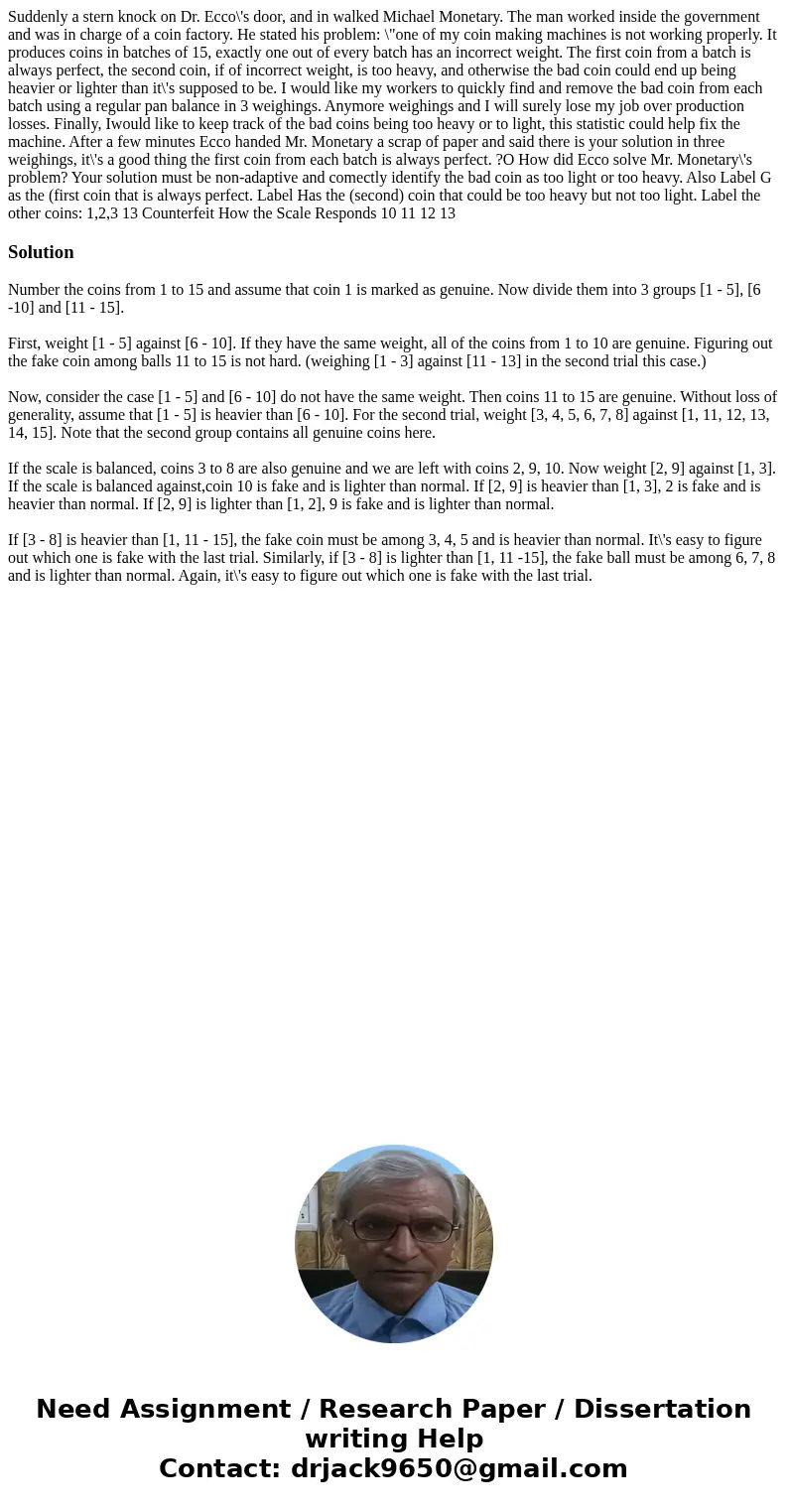Suddenly a stern knock on Dr Eccos door and in walked Michae
Solution
Number the coins from 1 to 15 and assume that coin 1 is marked as genuine. Now divide them into 3 groups [1 - 5], [6 -10] and [11 - 15].
First, weight [1 - 5] against [6 - 10]. If they have the same weight, all of the coins from 1 to 10 are genuine. Figuring out the fake coin among balls 11 to 15 is not hard. (weighing [1 - 3] against [11 - 13] in the second trial this case.)
Now, consider the case [1 - 5] and [6 - 10] do not have the same weight. Then coins 11 to 15 are genuine. Without loss of generality, assume that [1 - 5] is heavier than [6 - 10]. For the second trial, weight [3, 4, 5, 6, 7, 8] against [1, 11, 12, 13, 14, 15]. Note that the second group contains all genuine coins here.
If the scale is balanced, coins 3 to 8 are also genuine and we are left with coins 2, 9, 10. Now weight [2, 9] against [1, 3]. If the scale is balanced against,coin 10 is fake and is lighter than normal. If [2, 9] is heavier than [1, 3], 2 is fake and is heavier than normal. If [2, 9] is lighter than [1, 2], 9 is fake and is lighter than normal.
If [3 - 8] is heavier than [1, 11 - 15], the fake coin must be among 3, 4, 5 and is heavier than normal. It\'s easy to figure out which one is fake with the last trial. Similarly, if [3 - 8] is lighter than [1, 11 -15], the fake ball must be among 6, 7, 8 and is lighter than normal. Again, it\'s easy to figure out which one is fake with the last trial.

 Homework Sourse
Homework Sourse